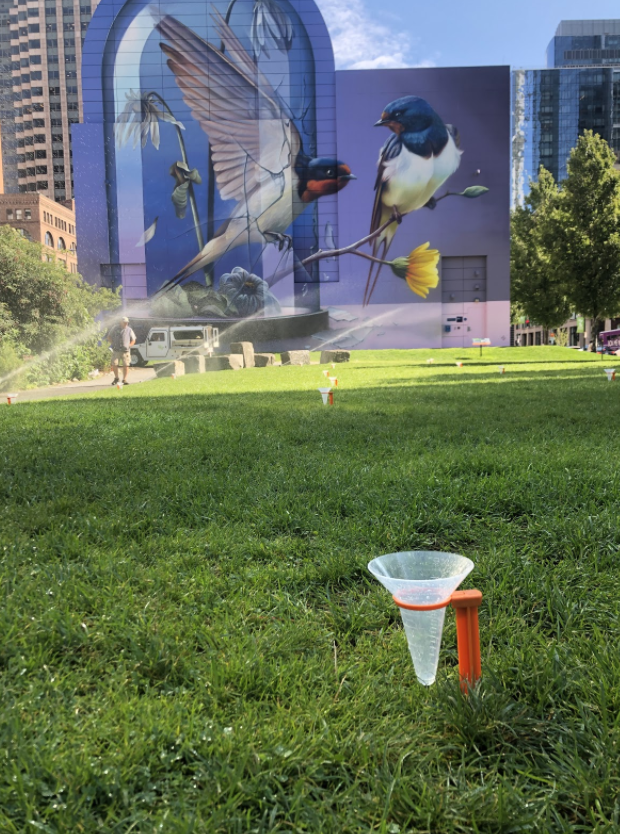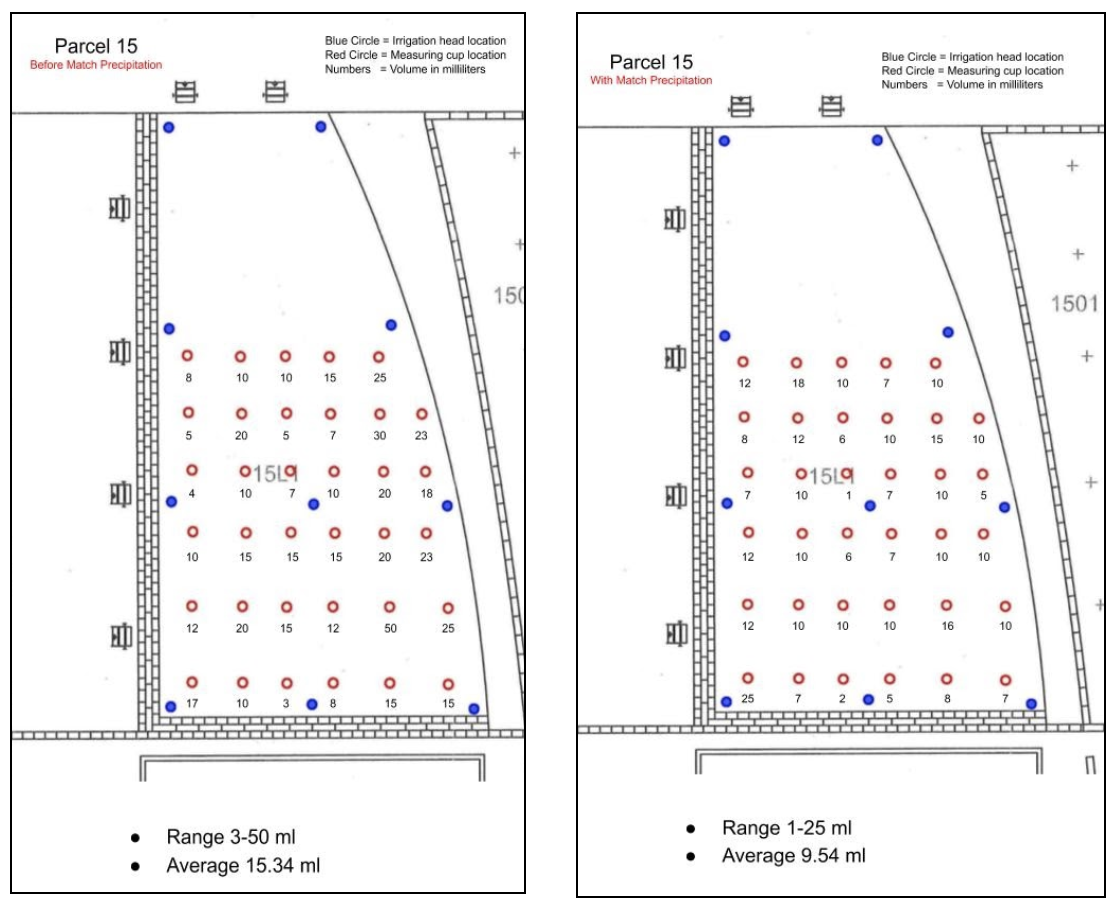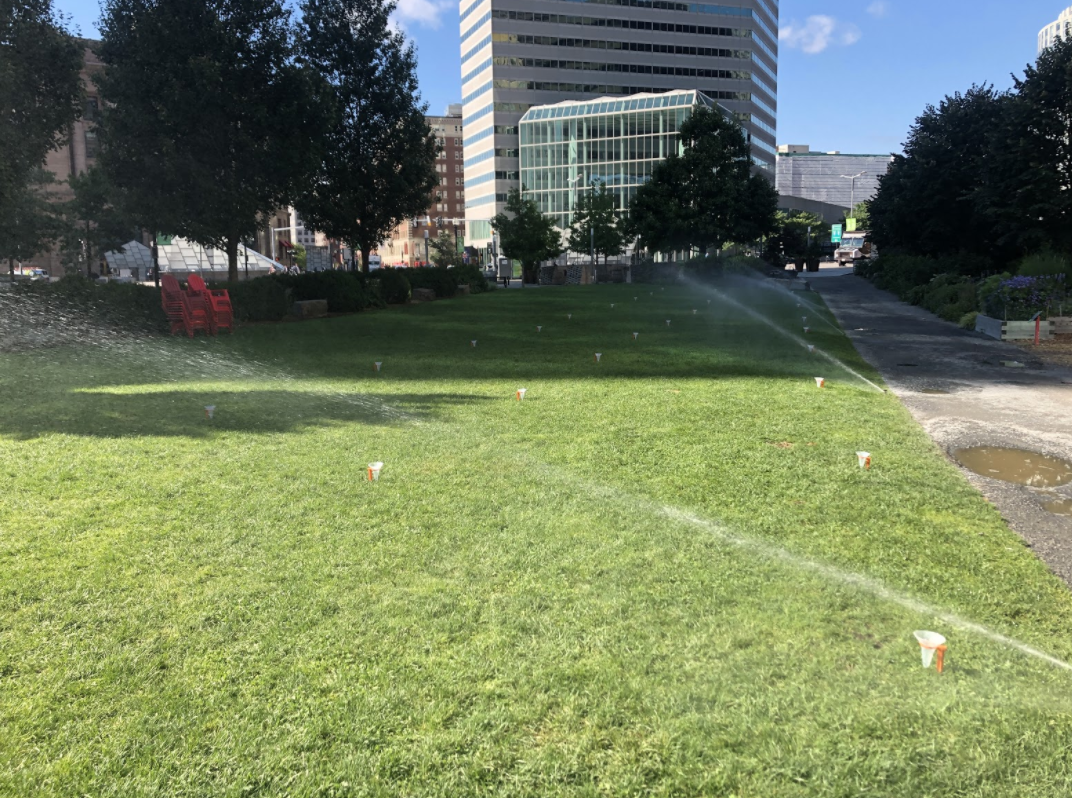Water Conservation on The Greenway: Match Precipitation & Cup Count
Written by Michael Bestoso, Landscape and Irrigation Specialist
The Greenway Conservancy constantly strives to improve our irrigation system throughout the park, making it more efficient and sustainable in both practice and performance. Today, in celebration of Earth Day, we’ll be discussing one of our strategies in depth, a process called match precipitation.
Match Precipitation involves taking timed measurements of water that is collected from our irrigation system in each lawn using special graduated catch cups. This is done to better understand the uniformity and precipitation rate of water that is applied throughout each lawn area and allows staff to more accurately schedule run times and ultimately leads to greater water conservation across The Greenway.
In a perfect world with a flat, square lawn that receives a uniform amount of sunlight, compaction, elevation, wind, and soil type, this process is a breeze. The lawns on The Greenway are affected by all of these conditions (and more!) and our horticulture staff account for this with adjustments to the process and nozzle sizes to match each lawn’s specific needs. This is done in an effort to avoid under or overwatering different areas of the park.

What are nozzles and how do we choose the nozzle sizes needed? Simply put, nozzles are the point at which water is released from the irrigation head along a lawn or garden, coming in a variety of sizes. To determine what nozzle size to use for a specific area, we use data collected from a set of measurements called a cup count. Catch cups are set throughout an area to collect water from our irrigation system over a short period of time. Measurements taken from the cup count help pinpoint where there is overwatering or underwatering within the given area. Accordingly, our staff make appropriate adjustments to the nozzle sizes being used. Adjusting the size of the nozzle changes the volume of water being released over a given time.
Let’s explore an example. Looking at the cup count measurements we have already taken in one area of The Greenway, labeled here as Parcel 15, it becomes evident the irrigation system was not releasing a uniform amount of water.

The cup count maps show where we placed each cup in the lawn and exactly how many milliliters of water was collected. The first map on the left shows the measurements from before we made adjustments to the irrigation in that area, the second map on the right shows how things changed after one adjustment. You can see a decrease in the average water collected (showing water conservation) while also seeing a decreased range from the lowest to the highest volume (showing improved irrigation uniformity). We can see improvements already, but could always make more adjustments to further increase the uniformity of our irrigation system in this area of The Greenway.

Another strategy in water conservation in the park is about the timing of our irrigation system. The more time you need to run an irrigation system over a lawn or garden, the more water you can lose to evaporation and wind drift. If we can reduce our irrigation run times by updating our system, we subsequently will be reducing the time that wind drift and evaporation can occur. Location and angle of the nozzle heads can also be a factor in reducing water loss to evaporation and wind drift.
All of these system checks help to reduce the amount of water the Conservancy uses in managing and maintaining The Greenway while still meeting the plants needs, allowing our lawns to continue to be green, healthy, and sustainable!
